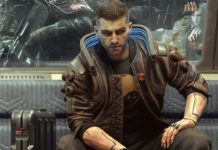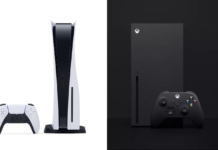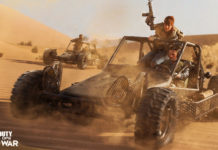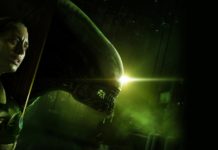We reveal to you our first half of our conversation with Dragon Age II Art Director Matt Goldman on the subject of strategy games, Jade Empire and converting concept art to in-game visuals. Tomorrow we will showcase our second part, which discusses Mass Effect 3, new settings for RPGs and much more.
Matt Goldman: My name is Matt Goldman, and I am the art director for Dragon Age II.
Dakota Grabowski: How long have you been with BioWare?
MG: I started in 1998.
DG: What products have you worked on?
MG: I worked on Baldur’s Gates, a little bit on KotOR, Jade Empire and Dragon Age. I also did take a break to go to Ensemble Studios.
DG: So you are a big fan of strategy games?
MG: I totally love strategy games.
DG: What did you work on at Ensemble?
MG: Halo Wars.
DG: How was the transition to RPGs on the consoles after working on the PCs for so long with your artwork? Do you have to cater towards more dumb-down visuals?
MG: Well, obviously I would never say that. What we did is try to realign the visual language for Dragon Age. We wanted to focus on picture-making quality and techniques that would allow the visual style and language of the product to work on whatever kind of platform. It takes away the limitation of technology. You have some really fantastic looking games like BioShock or Gears that are highly focused experiences. They are really pushing the technology as far as it can be pushed on that console. To provide a really broad, sweeping kind of epic game with the 1,000 characters, 100 areas, etc. you can’t rely on baroque artistry of the surface quality of things. You have to rely more on the basic artistic components like contrast, tone, color field, use of negative space, etc. That’s what we were aiming for, is to make a language that is just a little bit more universal so that it would look good on the console. When it comes over to the PC, fundamentally the design language is strong. When you do layer over, the baroque detail and all of the cool graphical effects that the PC can do, then it would just look that much better.

DG: The last year with Dragon Age, a concept art Morrigan was out of this world. In terms of design, when it translated to the consoles and PC version, people have wondered what happened. How do you feel when your concept art is taken from grade A and then it’s down to grade B for the consoles and the PCs? There were some people that wondered what happened to the younger, more naïve version of Morrigan, that has now turned into a sexier, more appealing one.
MG: Obviously that fills us with a desire for revenge to do better next time, and align the technology and the design with the art better so that we’ve designed what we intended is shown in the final product. There were a lot of instances where the thing we wanted didn’t come out for whatever various reasons. It’s learning as a team to better navigate those challenges together. Instead of trying to design something on your own and then everything you try and do requires 10 more people to help you actually make it come alive. Basically, working within that limitation and making that a strength instead of a road block.
DG: What is your specific role?
MG: My job is to create the vision and the philosophy for the art, and work with the concept team to flesh out all of the various different bits of the game: the visual effects, the UI, environments, characters, creature animation, and cinematics. I’ve worked with key members of all those teams – interviewing everybody on the entire team and trying to get the goals and the vision of the project to line up with what their aspirations are. By doing so, that empowers everybody on the team to make those decisions in full knowledge of what our objective is. Then what I basically do is go around and help critique the art, help people navigate problems, bring together teams to solve specific issues, etc.
DG: Could you speak on how you feel about the freedom of working on Dragon Age, the intellectual property of BioWare and KotOR, which was working with LucasArts? How much better does it feel to have that freedom working with IP rather than license?
MG: From the standpoint of a game artist, I would say working on Dragon Age is probably just about the best job you could have because you have very broad freedom to interact with the designers and create and explore a universe that is of your own design. That’s very satisfying, and I happen to like working on fantasy because you can really stretch your imagination a long way. There are a lot of different things that can exist within fantasy. I think if you’re constrained by an IP or by science fiction, trying to describe things in more scientific terms, it’s more difficult to be creative.
DG: So you prefer Fantasy over Sci-Fi then?
MG: I would say; especially to work on.

DG: Have you worked on the Mass Effect series?
MG: Only a tiny bit, yeah.
DG: So you’ve been working on mostly the BioWare fantasy titles Baldur’s Gate, Jade Empire.
MG: Yeah, the Baldur’s Gate series, Jade Empire, and Dragon Age II.
DG: With Jade Empire – that whole oriental, Asian, kung-fu/Martial Arts vibe – was that mostly your creation or ideas that you’ve learned from your life?
MG: Well, I actually have fond memories from that project. That, to me, seemed like a pretty crazy thing to ask a bunch of prairie boys from Northern Alberta to try and do an epic Asian kung-fu game. Basically that was an incredible amount of research trying to even learn the basics of the design aesthetic and some of the primary literature. I spent three and half years watching nothing but kung-fu movies and reading Outlaws of the Marsh three times, trying to get a handle on it and make something that was remotely credible.
DG: How do you feel with the end result from your perspective of the concept to full creation for Jade Empire?
MG: Well Jade was nominated for an Interactive Academy of Science’s art direction award. So I think the art direction was pretty decent. It was pretty fun to build it. I would revisit the world in a second, given the opportunity.










